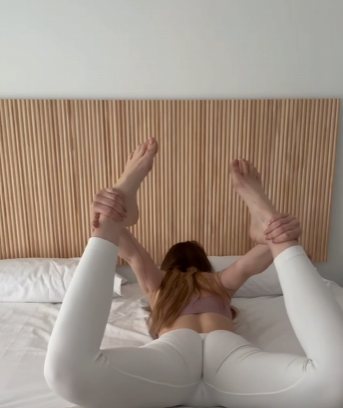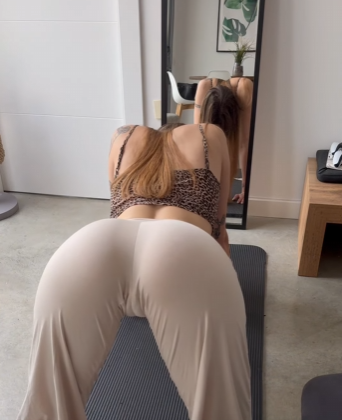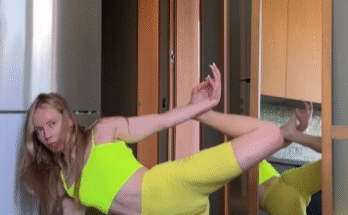
When most people think about flexibility, they imagine hamstrings, shoulders, or backbends. But one of the most important—and often overlooked—areas for flexibility is the arch of the foot. Whether you’re a dancer, athlete, yogi, or someone simply looking to improve posture and balance, working on your arch flexibility at home can lead to impressive results. This guide will walk you through why arch flexibility matters, how to improve it safely, and the best exercises you can do at home.
Why Arch Flexibility Matters
Your foot arch plays a crucial role in supporting your body, distributing weight evenly, and absorbing shock during movement. If your arches are too tight or too flat, it can lead to pain in the:
- Heels
- Ankles
- Knees
- Hips
- Even lower back
Improving arch flexibility helps:
- Prevent foot injuries like plantar fasciitis or shin splints
- Improve balance and posture
- Enhance performance in dance, gymnastics, yoga, or running
- Reduce fatigue after standing or walking for long hours

Can You Really Improve Arch Flexibility at Home?
Yes! With consistent stretching, strengthening, and massage techniques, you can greatly improve the mobility and flexibility of your arches without ever stepping into a studio or gym. The key is to start slow, stay consistent, and listen to your body.
Before You Start: Prepare Your Feet
Just like you wouldn’t run without warming up, don’t stretch your arches without preparing them. Here’s a simple warm-up:
- Foot Roll with a Ball
- Sit on a chair.
- Roll a tennis or massage ball under your foot for 2 minutes per foot.
- Focus on the arch but roll the heel and toe areas too.
This wakes up the muscles and increases blood flow.
- Toe Spreads and Squeezes
- Try to spread your toes apart as wide as you can, then scrunch them together.
- Repeat 10–15 times.
This activates the intrinsic muscles of your feet.

Best At-Home Arch Flexibility Exercises
Now let’s get into the main event. These exercises can be done on a mat, rug, or towel, and you only need simple props like a towel, band, or small ball.
1. Towel Stretch (Passive Stretch)
- Sit on the floor with your legs extended.
- Loop a towel or resistance band around the ball of your foot.
- Gently pull back, keeping your knee straight.
- Hold for 30 seconds and repeat on the other foot.
- Do 3 rounds per foot.
This is great for stretching both the arch and the calf muscles, which are often connected in tightness.
2. Arch Raises (Active Strength + Flexibility)
- Stand with bare feet on the ground.
- Try to lift the arch of your foot without curling your toes.
- Hold for 5 seconds, then relax.
- Do 2 sets of 10 reps per foot.
This builds the strength needed to support a flexible arch.
3. Toe Point and Flex with Resistance Band
- Sit on the floor and loop a band around your toes.
- Point your toes slowly against the resistance, then flex back.
- Go slowly to feel the stretch and activation.
- 2 sets of 10 per foot.
This targets the arch, ankle, and toe joints all at once.
4. Doming Exercise (Short Foot Exercise)
- While seated, press the ball of your foot and heel into the ground.
- Try to lift the arch up like you’re making a “dome” without curling your toes.
- Hold for 10 seconds.
- Repeat 5–10 times on each foot.
This is small but powerful. It strengthens the deep foot muscles that control arch shape.
5. Foot Massage with Frozen Water Bottle
- Roll a frozen water bottle under your foot for 3–5 minutes.
- It reduces tension and inflammation after stretching.
- Bonus: Helps with recovery and plantar fasciitis prevention.

Bonus Flexibility Tips
Here are some extra techniques to improve results:
Yoga Poses to Include:
- Downward Dog: Stretches calves, hamstrings, and arches.
- Hero Pose (Virasana): Sit on your heels to stretch the tops of the feet.
- Bridge Pose with Toes Pointed: Lifts and stretches the arch in an extended line.
Footwear Tips:
- Avoid overly stiff shoes or heels.
- Walk barefoot on soft surfaces (grass, carpet) to encourage natural arch movement.
- Use arch-supporting insoles only if needed—they can reduce natural muscle engagement over time.
Consistency is Key:
Aim to work on your arches at least 3–4 times a week, even if it’s only for 10–15 minutes. Over time, you’ll notice better range of motion and strength.

Caution: Don’t Overdo It
Stretching too hard or too fast can cause injury, especially in the small and sensitive structures of the foot. Signs you’re pushing too far include:
- Sharp or burning pain
- Swelling
- Bruising
- Tingling or numbness
If any of these occur, stop the exercise and rest. See a professional if symptoms persist.
Real-Life Results
Many dancers, runners, and yoga practitioners who add arch exercises to their routine report:
- Increased jump power and landing control
- Improved alignment in poses and standing positions
- Less foot pain and better endurance
Even if you’re not an athlete, daily life becomes more comfortable when your feet feel strong and supple.
Conclusion: Your Feet Deserve the Attention
We often neglect our feet, yet they carry us every day. Working on arch flexibility at home is a gentle but effective way to take care of your foundation. Whether you’re aiming for better performance or just want to walk more comfortably, these simple exercises can create noticeable improvements.
Start slow, stay consistent, and remember: when your feet are happy, your whole body follows.



